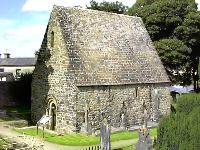
|
" About Ireland " |
Français
Deutsch Italiano Español |
Ireland is situated on the western seafront of Europe. It is a relatively small island, just 170 miles wide by 300 miles long and has a population of less than 4 million people. Its nearest neighbour is Scotland, which is only about 20 miles across the North Channel and is visible on a clear day. Wales is about 50 miles from Ireland at its nearest points.
Ireland, a land of ancient cultures, a store room to the wealth of prehistoric and medieval cultural sites. This is obvious from the early Bronze Age graves decorated with the abstract art that incorporates the ritual decoration of it's time.Impressive examples of such monuments can be seen at Dowth, Knowth and Newgrange.
St. Patrick, the Patron Saint of Ireland established christianity in Ireland in 389-c,461. His feast day March 17th is a national holiday and is celebrated with customary zeal nationwide and indeed in America, home to more people of Irish origin than Ireland itself.
Evidence of early christianity is found across the land in the form of monastries,high crosses and round towers.Glendalough in County Wicklow, founded in 1000 A.D. and the Gallarus Oratory on the Dingle Peninsula dating back to the 8th Century are two impressive examples of monastry settlements.
Gaelic, the purest of all the celtic languages despite its decline in more recent years, is the official language of the Irish Republic.
Gaelige is taught in all schools, but is rarely spoken, except in regions of the Gaeltacht (in Kerry, Waterford Galway and Donegal) where it is widely spoken.
 If it's angling, golf, horse riding, hunting or simply strolling on the most magical land in the world, then the Emerald Isle with it's "Forty shades of Green" is waiting for you.
If it's angling, golf, horse riding, hunting or simply strolling on the most magical land in the world, then the Emerald Isle with it's "Forty shades of Green" is waiting for you.
If you do decide to visit Ireland, we hope that our directory of Accommodation in Ireland will help you to plan your itinerary and make your stay here more enjoyable and relaxed so that you will return again and again.